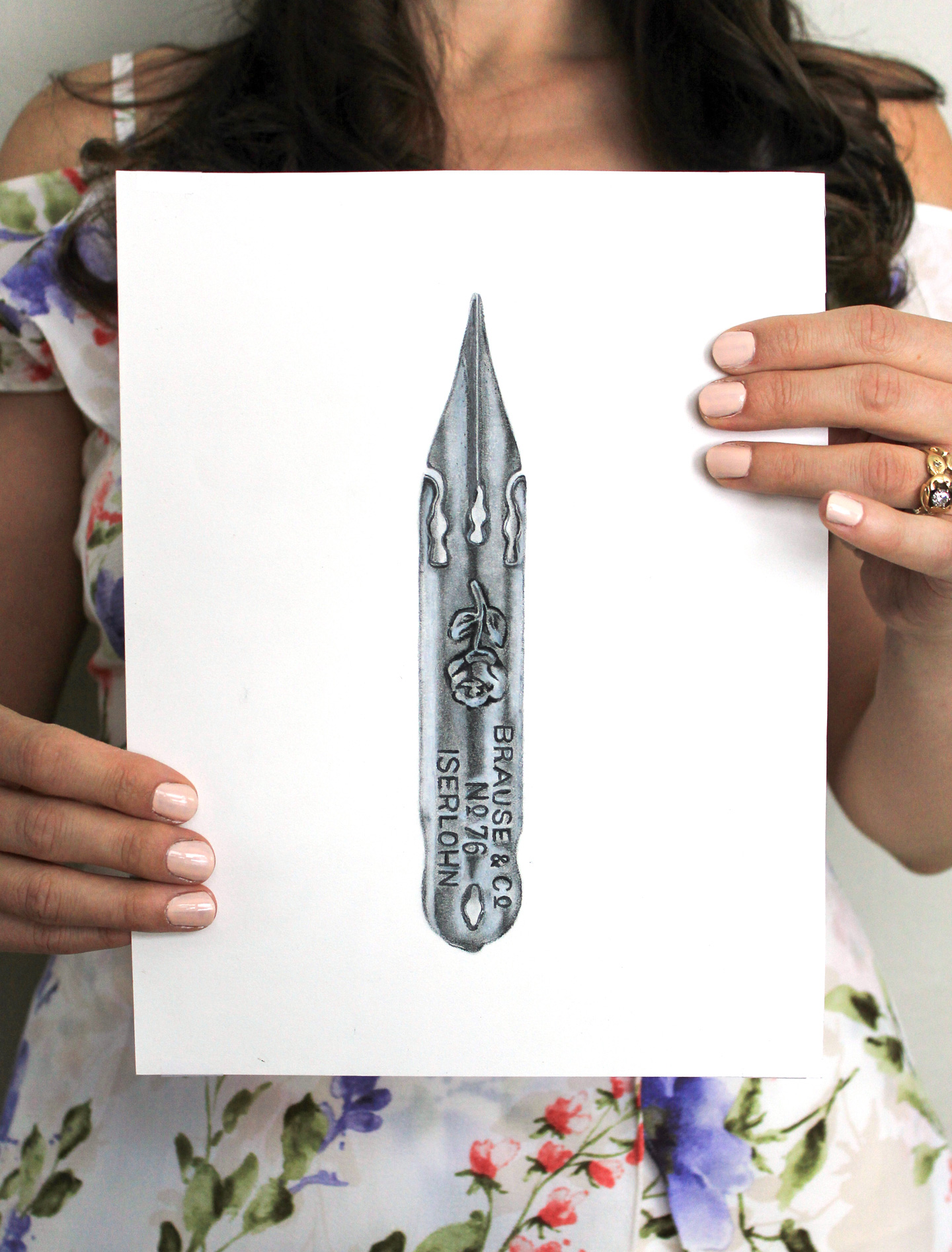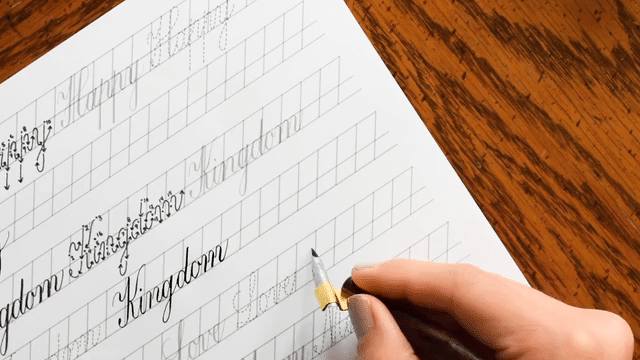
If you have never experimented with inventing a hand lettering style, I hope you’ll give it a try after reading this blog post! Hand lettering is a lot of fun because you get creative freedom, but you also have some guidelines to follow. Namely, all letters in your alphabet must be easily identifiable — you can’t get too “out there” with your concept. It’s a clear-cut project that gives you plenty of room to flex your artistic muscle! The steps outlined in this blog post will give you the information and inspiration you need to get started developing your own hand lettered alphabet today.
1. Decide: All Caps, No Caps, or Traditional

Some hand lettering styles set themselves apart by using all capital letters or all lowercase letters. I think there is a time and place for both of these variations! You can see that Morgan Style Lettering, used to write the address on the envelope below, has an approachable and informal look. Lowercase letters tend to communicate playfulness and informality.

Conversely, you can use an all-capital letters hand lettering style to get your message across in a bold way, as shown on the George Style envelope below.

The traditional alternative is to come up with an alphabet that includes both uppercase and lowercase letters. This place card is also George Style, but it incorporates lowercase versions of letters.

When I develop hand lettering styles, I generally choose to create either all uppercase or all lowercase letters, not both. The reason? It’s quicker to come up with and embellish 26 letters versus 52!
2. Decide What Your Letters Will Have in Common

As you consider what your alphabet will look like, think about different characteristics each letter will share. For example, all of the letters in George Style lettering feature an area that’s filled in with densely positioned, angled lines.

George Style letters, with the exception of naturally round letters like “C” and “O”, are very geometric. I tried to incorporate long, skinny rectangles into letters whenever possible to give them a more unified look! I also made sure all capital letters were the exact same height.
3. Draw Guidelines
If I’m developing a new hand lettering style, I always begin by drawing top and bottom guidelines in pencil.

Guidelines are nice because they keep your lettering uniform. Of course, since you’re just playing with ideas here, you don’t necessarily need guidelines … but they don’t hurt! The top and bottom lines in the guidelines I drew are spaced 1/2″ away from each other. I find that that’s a good size to experiment with letters!
4. Use a Pencil to Draw the Letterforms in Your Alphabet

In this step, you’re laying down the “bones” of your hand lettering style. Try to draw letters that have a common theme. For example, the alphabet below features letters that have some sort of rounded element. You can see that the “A” doesn’t have a point at the top, both ends of the “C” curl in, and “Y” ends with a non-assertive cupped tail.

You probably won’t be able to make every single letter match in some way, but that’s okay. You can see in my pencil alphabet that there’s nothing special about “I”, and that’s fine: I’ll incorporate it into the alphabet better in the next step.
5. Trace Over the Alphabet With Ink + Add Flair

“Inking” is the fun part of making a hand lettering style! At this step, you get to add character to each of your letters with small illustrations, symbols, or special types of lines. Whatever theme you like, run with it! If you’re not loving it, it’s not a big deal to start over. For my alphabet, I chose a celestial theme — stars, moons, comets, planets, and a few dots. Make sure you use the writing instrument that you think you will use to write this hand lettering style in the future. For example, a lot of people like using Micron pens for hand-lettering. I, however, see myself using a dip pen whenever I write this style!

Once the ink dries, erase your guidelines. If you like what you see, congratulations! You’ve developed a new hand lettering style ripe for use on a variety of projects. If you don’t love the result, no problem: try again! Once you see your letters, you’ll be able to ask yourself what elements you’d like to keep for your next alphabet idea, and which elements don’t work.

When you are happy with your hand lettering style, cut it out and put it in a place where you can easily reference it! You’ll be surprised at just how helpful it is to have an exemplar. It’s just as easy to forget a hand lettering style as it is to come up with one!
6. Enjoy Using Your New Hand Lettering Style!

Once you have developed your hand lettering style, use it on a project! It doesn’t have to be a formal project … it can be something as simple as mail art or a couple of place cards for your next small get-together. You can then embellish your hand-lettering style with some color if you want to! The “Celestial Style” hand lettering in the place card below literally shines with the addition of Finetec in the stars, moons, and planets. A little bit of amethyst and blue watercolor is reminiscent of a night sky.

Always feel free to contrast your hand lettering with calligraphy! Calligraphy and print-style hand lettering always complement each other. In this case, the person’s last name has been added in with all-lowercase Kaitlin Style calligraphy. The small, looped calligraphy pairs perfectly with the large print letters!

I hope that you are inspired to try making your own alphabet! If you develop one, I’d love to see it on Instagram (tag @thepostmansknock) or Facebook. You are also welcome to use the “Celestial” alphabet I created for this post! Above you’ll find an exemplar of all the letters; feel free to save and print the image.
If you have any questions about hand lettering, feel free to comment! I want to sincerely thank you for reading TPK … I love getting to write creative blog posts for you and helping you to stay inspired. Really, just — thanks!
Warmly,




















